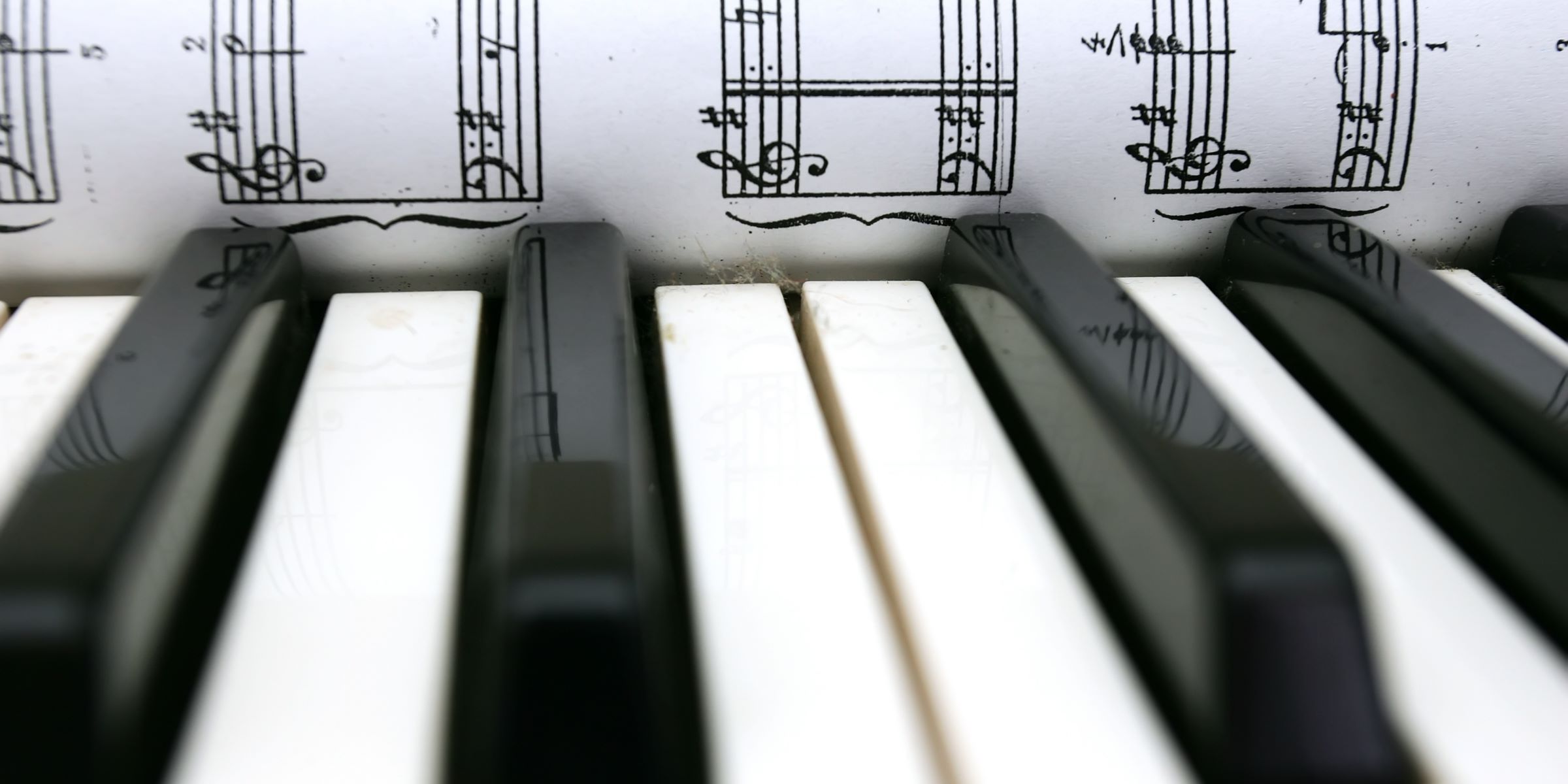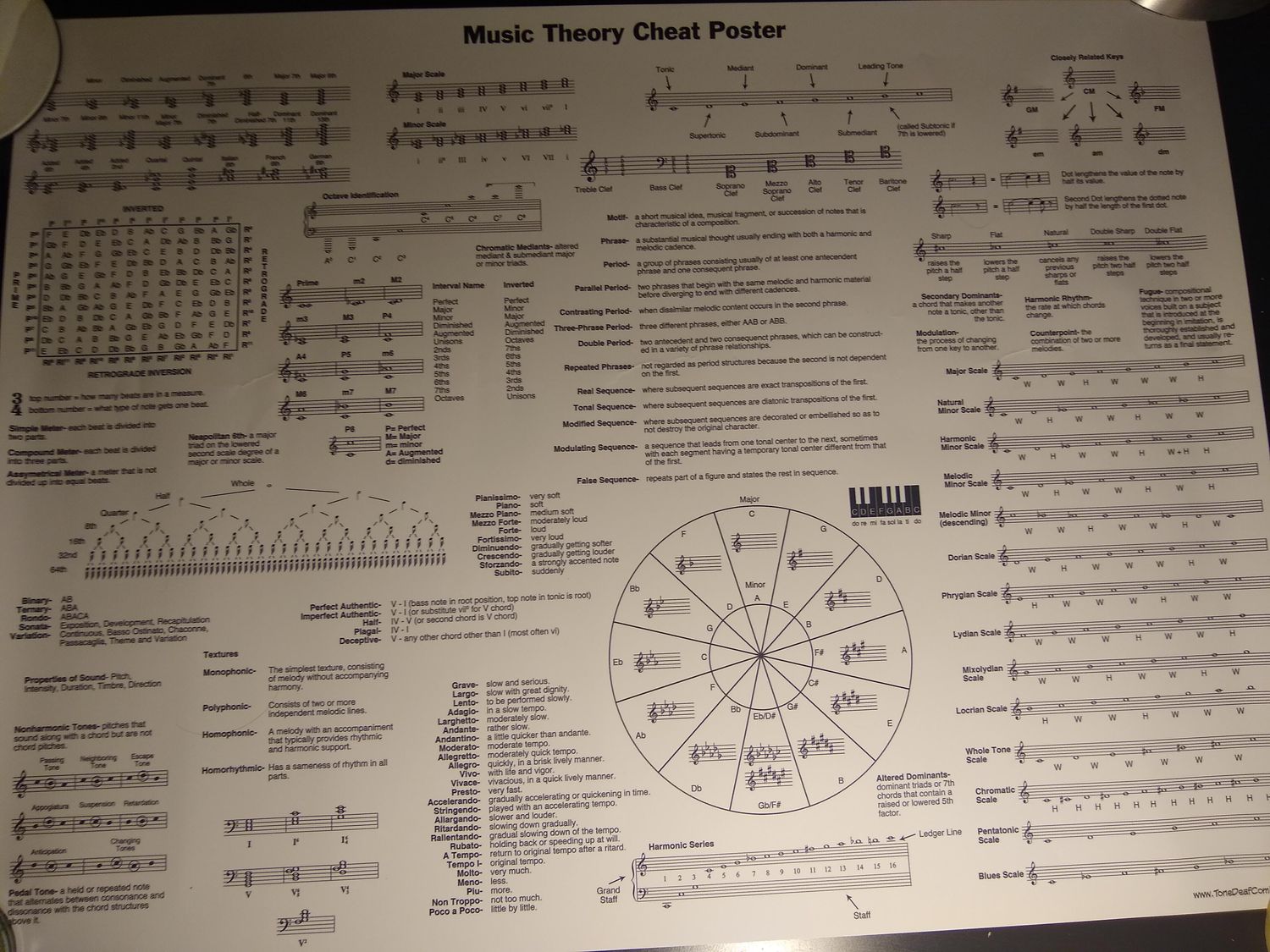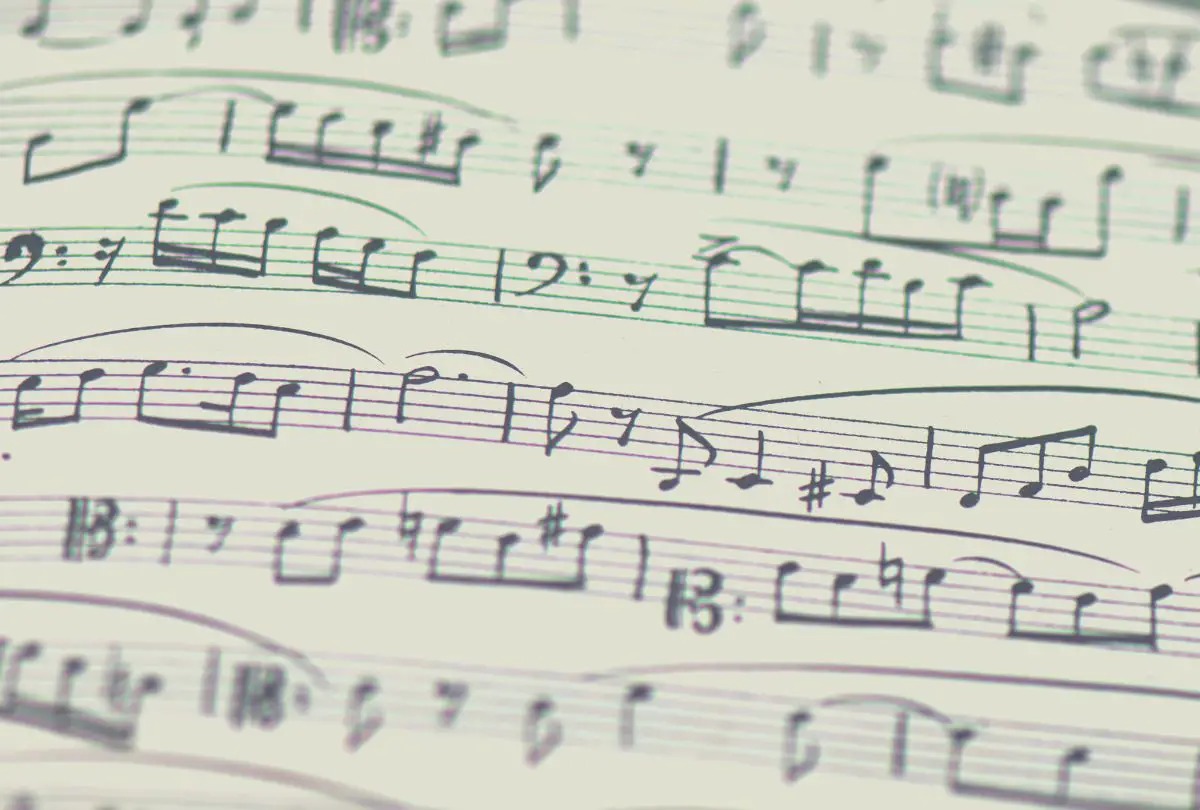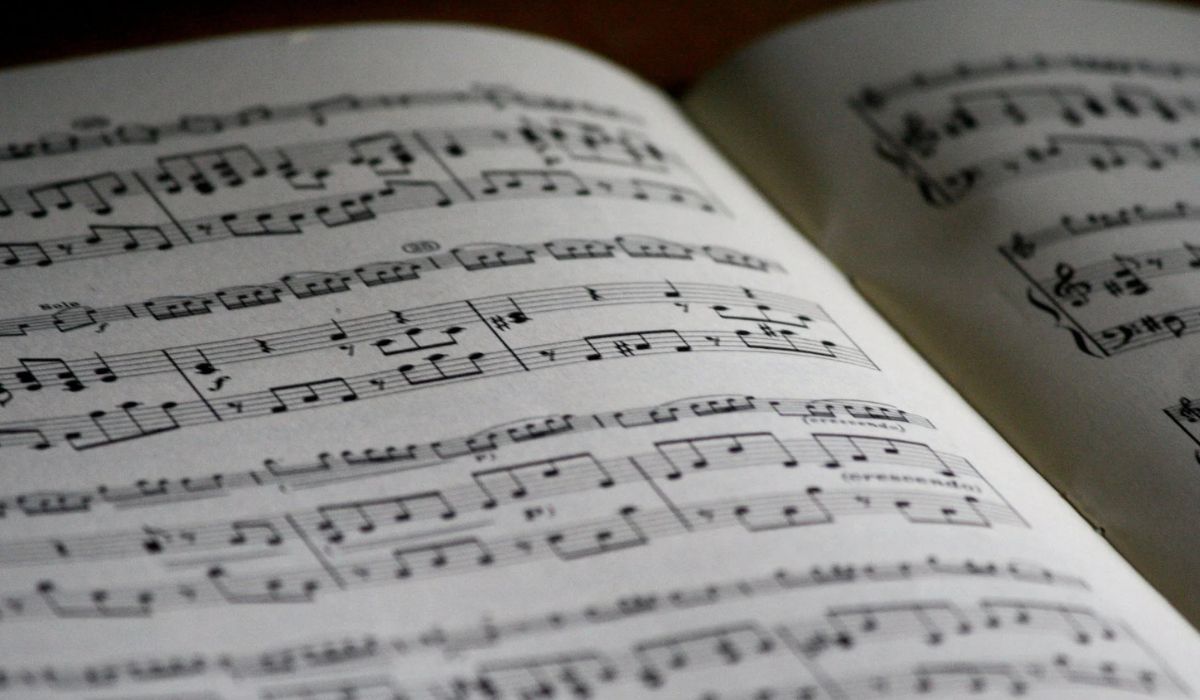Home>Production & Technology>Music Theory>How To Learn The Piano With Music Theory


Music Theory
How To Learn The Piano With Music Theory
Modified: February 10, 2024
Learn the piano using music theory to gain a solid understanding of the fundamentals and enhance your musical skills. Unlock the power of music theory and master the piano with ease.
(Many of the links in this article redirect to a specific reviewed product. Your purchase of these products through affiliate links helps to generate commission for AudioLover.com, at no extra cost. Learn more)
Table of Contents
- Introduction
- Benefits of Learning Piano with Music Theory
- Understanding the Basics of Music Theory
- Applying Music Theory Concepts to Piano Playing
- Essential Piano Exercises to Improve Music Theory Skills
- Tips and Techniques for Learning Piano with Music Theory
- Common Mistakes to Avoid When Learning Piano with Music Theory
- Resources and Tools for Learning Piano with Music Theory
- Conclusion
Introduction
Learning to play the piano is a fulfilling and enriching experience. It allows you to tap into your creativity, express emotions, and create beautiful music. While many people start learning the piano by memorizing songs or following sheet music, incorporating music theory into your learning journey can greatly enhance your understanding and proficiency.
Music theory is the study of how music works. It encompasses elements such as scales, chords, rhythm, harmony, and melody. By understanding these fundamental concepts, you can unlock a deeper understanding of the piano and its repertoire.
Learning the piano with a strong foundation in music theory offers numerous benefits. It allows you to interpret music more effectively, compose your own pieces, improvise, and play with greater expression. Additionally, it enables you to analyze and appreciate music from different styles and genres.
Whether you are a beginner or have been playing the piano for some time, incorporating music theory into your practice can make a significant difference in your growth as a musician. In this article, we will explore the benefits of learning piano with music theory, discuss the basics of music theory relevant to piano playing, and provide tips, exercises, and resources to help you integrate music theory into your piano learning journey. So grab your piano keys and let’s dive into the exciting world of learning piano with music theory!
Benefits of Learning Piano with Music Theory
Learning the piano with a strong foundation in music theory offers a wide range of benefits that can greatly enhance your musical journey. Let’s explore some of the key advantages:
- Enhanced Musical Understanding: Studying music theory gives you a deeper understanding of the underlying structure and mechanics of music. You’ll gain insights into how melodies, harmonies, and rhythms are constructed, enabling you to interpret and analyze music more effectively.
- Expressive Performance: When you understand music theory, you can bring more nuance and expression to your piano playing. By recognizing chord progressions, modulations, and dynamics, you’ll be able to convey the intended emotions of a piece more accurately.
- Composition and Improvisation: Music theory provides the foundation for composing your own music and improvising on the piano. With a solid understanding of scales, chords, and progressions, you can experiment and create your own unique musical ideas.
- Expanded Repertoire: With knowledge of music theory, you’ll have a broader repertoire at your fingertips. You’ll be able to play a wider range of music genres and styles, as you’ll be familiar with the common musical structures and patterns used in different genres.
- Efficient Learning: Learning piano with music theory saves time and effort in the long run. Instead of relying solely on memorization, you’ll understand the underlying principles that govern music, enabling you to learn new pieces faster and with greater accuracy.
- Collaboration and Communication: When playing with other musicians, a solid understanding of music theory allows for more effective collaboration. You’ll be able to communicate and understand musical concepts, making rehearsals and performances smoother and more enjoyable for everyone involved.
- Aesthetic Appreciation: As you deepen your knowledge of music theory, you’ll develop a heightened appreciation for the intricacies and beauty of music. You’ll be able to recognize and appreciate the technical skills and artistic choices made by composers and performers.
By incorporating music theory into your piano learning journey, you can unlock these benefits and take your musical abilities to new heights. It’s an investment in your growth as a pianist and a musician, allowing you to express yourself more fully and explore the vast world of music with confidence.
Understanding the Basics of Music Theory
Before diving into learning piano with music theory, it’s essential to grasp the foundational concepts that form the basis of music theory. Here are some key elements to familiarize yourself with:
- Notes: In music, notes represent the fundamental building blocks of melody and harmony. The musical alphabet consists of the letters A through G, and each note can be represented on the piano keyboard by a corresponding key.
- Scales: Scales are a sequence of notes arranged in ascending or descending order. They provide the framework for creating melodies and harmonies. Common scales in music theory include the major scale, minor scale, and pentatonic scale.
- Chords: Chords are groups of three or more notes played simultaneously. They provide harmony and support to the melody. Common types of chords include major chords, minor chords, and dominant seventh chords.
- Rhythm: Rhythm refers to the organization of time in music. It involves patterns of strong and weak beats, as well as the duration of notes and rests. Understanding rhythm is crucial for maintaining a steady tempo and creating a sense of musical flow.
- Harmony: Harmony is the combination of multiple notes played together to create chords and progressions. It adds depth and texture to music. Concepts such as consonance, dissonance, and chord progressions fall under the umbrella of harmony.
- Melody: Melody is a sequence of single notes played one after another. It is the main focus of a piece of music. Melodies are created using scales and can convey emotions, tell stories, or express musical ideas.
- Key Signatures: Key signatures are a set of sharps or flats placed at the beginning of a piece of music to indicate the key it is written in. Understanding key signatures helps pianists navigate through different tonalities and modulations.
- Dynamics and Articulation: Dynamics refer to the volume or intensity of the music, while articulation refers to how notes are played or connected. Paying attention to dynamics and articulation adds expression and variation to your piano playing.
These are just some of the fundamental concepts in music theory. As you delve deeper into your piano learning journey, you’ll encounter more intricate concepts and techniques that build upon these basics. Mastering these foundational elements will lay a strong groundwork for understanding and implementing music theory in your piano playing.
Applying Music Theory Concepts to Piano Playing
Now that you have a solid understanding of the basics of music theory, it’s time to explore how to apply these concepts to your piano playing. Here are some effective strategies to incorporate music theory into your practice:
- Sight-Reading: Utilize your knowledge of scales, key signatures, and rhythms to sight-read new pieces more efficiently. Being able to identify patterns and understand the structure of the music on the page will expedite your learning process.
- Chord Progressions: Experiment with playing chord progressions in different keys. Understanding the relationship between chords in different keys will enhance your ability to accompany melodies and improvise.
- Analyzing and Transcribing: Take the time to analyze the music you are playing. Identify the key, chord progressions, and key sections of the piece. If you are advanced enough, try transcribing melodies or chord voicings by ear. This will deepen your understanding and help you internalize the music.
- Ear Training: Develop your ear by practicing intervals, recognizing chord qualities, and identifying melodies or harmonies played by ear. This will improve your ability to play by ear, improvise, and compose your own music.
- Improvise: Use your knowledge of scales, chords, and harmonic progressions to feel more confident in your improvisation skills. Experiment with different melodic patterns and harmonies to create your own unique musical phrases.
- Transpose: Practice transposing pieces into different keys. This will help you become more comfortable with different tonalities and expand your musical versatility.
- Compose: Apply music theory concepts to create your own compositions. Use your knowledge of scales, chord progressions, and harmonic principles to craft melodies and harmonies that convey your musical ideas and emotions.
- Collaborate: When playing with other musicians, use your understanding of music theory to communicate effectively. You’ll be able to discuss key changes, chord progressions, and musical ideas with clarity, enhancing your collaborative experience.
By actively applying music theory concepts to your piano playing, you can deepen your understanding of music, expand your creativity, and unlock new possibilities on the piano. It’s an essential step in becoming a well-rounded and proficient musician.
Essential Piano Exercises to Improve Music Theory Skills
To strengthen your music theory skills and apply them effectively on the piano, incorporating specific exercises into your practice routine can be highly beneficial. Here are some essential exercises to consider:
- Scales and Arpeggios: Practice playing scales and arpeggios in different keys. Start with the major and minor scales, then progress to more advanced scales such as harmonic minor and melodic minor. This exercise will help you become familiar with different key signatures and improve your finger dexterity.
- Chord Inversions: Experiment with playing chord inversions. Practice playing chords in root position, first inversion, and second inversion. This exercise will enhance your knowledge of chord voicings, improve your finger independence, and develop your understanding of harmonic structures.
- Transposition: Take a piece or a specific musical excerpt and transpose it into a different key. This exercise will strengthen your understanding of key relationships and train your ear to recognize the similarities and differences between different tonalities.
- Harmonic Analysis: Take a piece of music and analyze its harmonic structure. Identify the chords and their functions within the piece. This exercise will deepen your understanding of chord progressions, harmonic patterns, and how harmony supports the melody.
- Rhythm and Sight-Reading: Improve your rhythmic accuracy and sight-reading skills by practicing exercises that focus on different rhythms and note durations. Start with simpler rhythms and gradually increase the complexity as you become more comfortable. This exercise will enhance your ability to read and interpret rhythm notation.
- Ear Training: Dedicate time to ear training exercises such as interval recognition, chord identification, and melodic dictation. This exercise will sharpen your ear and help you internalize music, allowing you to play by ear and improvise more confidently.
- Composition and Improvisation: Set aside time for creative exploration. Experiment with composing your own melodies, chord progressions, or short musical phrases. This exercise will develop your compositional skills, as well as your ability to apply music theory concepts in a practical and creative way.
Consider incorporating these exercises into your daily practice routine, focusing on areas where you feel you have the most room for growth. Remember to start slowly and gradually increase the difficulty as you become more comfortable. By dedicating time to these exercises, you’ll strengthen your music theory skills and improve your overall piano playing abilities.
Tips and Techniques for Learning Piano with Music Theory
Learning the piano with a strong foundation in music theory can be a fulfilling and enriching experience. Here are some valuable tips and techniques to help you make the most of your journey:
- Start with the Basics: Build a strong foundation in music theory by starting with the basics. Familiarize yourself with notes, scales, and chords, and gradually progress to more complex concepts. Understanding the fundamentals will make learning more advanced concepts much easier.
- Integrate Theory into Practice: Instead of treating music theory as a separate subject, seamlessly integrate it into your piano practice. Analyze the music you are learning, identify key signatures and chord progressions, and apply your knowledge of theory to interpret the music with depth and understanding.
- Dedicate Time to Theory Study: Set aside dedicated study time to focus solely on music theory. Use this time to delve deeper into specific concepts, practice ear training, or explore new ideas. Consistency is key, so try to establish a regular schedule for theory study.
- Practice Sight-Reading: Sight-reading exercises are a powerful way to develop your music theory and piano skills simultaneously. Regularly practice reading and playing music from sheet music, focusing on understanding key signatures, rhythms, and musical notation.
- Listen and Analyze: Actively listen to a wide range of music and analyze the elements of music theory present in the pieces. Pay attention to chord progressions, melody constructions, and harmonic structures. This will train your ear and deepen your understanding of how theory is applied in various musical contexts.
- Experiment and Explore: Embrace experimentation and creative exploration. Use your knowledge of music theory to improvise, compose your own music, and explore different musical styles. Don’t be afraid to step outside your comfort zone and try new things – it’s through exploration that you’ll discover your unique musical voice.
- Work with a Teacher: Consider working with a piano teacher who has a strong understanding of music theory. They can guide you in applying theory concepts to your piano playing, offer personalized feedback and guidance, and help you progress more efficiently.
- Stay Consistent and Patient: Learning piano with music theory takes time and dedication. Be consistent with your practice, stay patient with yourself, and celebrate small victories along the way. Enjoy the process of learning and growing as a musician.
Remember, learning piano with music theory is a lifelong journey. Embrace the process, stay curious, and have fun along the way. With diligence and a solid foundation in music theory, you’ll develop a deeper understanding of the piano and unlock your full potential as a pianist.
Common Mistakes to Avoid When Learning Piano with Music Theory
Learning piano with a strong foundation in music theory is a powerful approach. However, it’s important to be aware of common mistakes that can hinder your progress. By avoiding these pitfalls, you can optimize your learning experience. Here are some common mistakes to steer clear of:
- Skipping the Fundamentals: Skipping over the basics of music theory is a common mistake. Take the time to understand and master fundamental concepts like notes, scales, and chords. Without a solid foundation, more advanced theory concepts will be challenging to grasp.
- Overwhelming Yourself with Information: It can be tempting to dive into complex music theory concepts all at once. However, overwhelming yourself with too much information can lead to confusion and frustration. Focus on one concept at a time and gradually build upon your knowledge.
- Neglecting Ear Training: Music theory and ear training go hand in hand. Neglecting ear training can limit your ability to play by ear, recognize chords, and improvise. Incorporate regular ear training exercises to develop this essential skill.
- Separating Music Theory from Practice: Music theory should be an active part of your piano practice, not a separate entity. Avoid keeping theory and practice separate. Instead, integrate theory concepts into your playing, analysis, and interpretation of music.
- Relying Solely on Memorization: While memorization plays a role in piano playing, relying solely on memorization without understanding music theory can limit your growth. Understand the underlying principles behind the music you’re playing to enhance your interpretation and musicality.
- Not Seeking Guidance: Learning piano with music theory can be challenging, especially without guidance. Avoid the mistake of not seeking help from a teacher or mentor. They can provide valuable feedback, guidance, and help you navigate complex theory concepts.
- Skipping Transposition and Composition: Transposing pieces into different keys and composing your own music may seem daunting, but they are valuable exercises. Skipping these activities robs you of opportunities to apply theory in practical ways and limits your musical growth.
- Becoming Overly Focused on Theory: While music theory is important, becoming overly fixated on theory can hinder your artistic expression. Remember to strike a balance between theory and creative exploration. Allow room for experimentation and personal expression in your piano playing.
Avoiding these common mistakes will help you develop a well-rounded understanding of music theory and its application on the piano. Stay patient, remain consistent, and enjoy the process of learning and growing as a musician. With the right approach, you’ll achieve great strides in your piano playing and musical understanding.
Resources and Tools for Learning Piano with Music Theory
When embarking on the journey of learning piano with music theory, having access to quality resources and tools can greatly enhance your learning experience. Here are some valuable resources to consider:
- Music Theory Books: Invest in reputable music theory books that provide a comprehensive overview of the subject. Look for titles that are specifically geared towards piano players or those that cover both music theory and piano techniques.
- Online Courses and Tutorials: Take advantage of online courses and tutorials specifically designed for piano players. Websites and platforms offer structured lessons, video tutorials, and interactive exercises to help you learn music theory alongside your piano practice.
- Music Theory Apps: Utilize various music theory apps available on mobile devices. These apps often offer interactive lessons, ear training exercises, and quizzes to enhance your understanding of music theory on the go.
- Piano Method Books: Many piano method books incorporate music theory into their curriculum. Look for well-known piano method series that include theory components, as they can provide a structured and integrated approach to learning piano and music theory simultaneously.
- Online Forums and Communities: Engage with online forums and communities where you can connect with other pianists and music enthusiasts. These platforms provide opportunities to ask questions, exchange ideas, and receive feedback on your progress. It can be an excellent way to learn from others with similar interests.
- Sheet Music and Repertoire: Explore sheet music collections and piano repertoire that incorporate music theory concepts. Look for pieces that challenge your understanding of scales, chords, and harmonic progressions, allowing you to apply your knowledge in a practical context.
- Music Theory Websites and Blogs: Visit reputable music theory websites and blogs that offer free resources and articles on various music theory topics. These online platforms often provide explanations, examples, and exercises to enhance your understanding and application of music theory.
- Online Music Theory Tools: Take advantage of online music theory tools such as interactive chord generators, scale finders, and ear training platforms. These tools can assist you in practicing and reinforcing your knowledge of music theory concepts.
- Piano Teachers or Instructors: Consider working with a qualified piano teacher or instructor who has a strong background in music theory. They can provide personalized guidance, answer questions, and tailor their instruction to align with your specific goals and learning style.
Remember to choose resources and tools that align with your level of expertise and learning preferences. Mix and match different sources to create a well-rounded learning experience. Stay curious, explore different avenues, and find what works best for you in your piano and music theory journey.
Conclusion
Learning the piano with a solid foundation in music theory can transform your musical journey. By incorporating music theory into your practice, you can enhance your understanding, interpretation, and overall proficiency as a pianist. Understanding the basics of music theory, such as notes, scales, chords, rhythm, and harmony, lays a strong foundation for further exploration and growth.
When learning piano with music theory, it is important to apply these concepts to your playing. Sight-reading, analyzing music, and experimenting with chord progressions and improvisation are effective ways to integrate theory into practice. By doing so, you can develop a deeper understanding of music, broaden your repertoire, and express yourself more effectively on the piano.
There are also essential exercises, tips, and techniques that can enhance your music theory skills. Regularly practicing scales and arpeggios, transposing pieces, and analyzing harmonies are all valuable exercises. Tips such as integrating theory into your practice, seeking guidance when needed, and staying consistent in your studies can also contribute to your growth as a musician.
As with any learning journey, there are common mistakes to avoid. Skipping the fundamentals, overwhelming yourself with information, neglecting ear training, and becoming overly focused on theory are pitfalls to steer clear of. By being mindful of these mistakes, you can progress more effectively and find a balance between theory and creativity.
When diving into learning piano with music theory, utilizing resources and tools can greatly enhance your learning experience. Music theory books, online courses, music theory apps, and online communities are just a few examples of the resources available. Exploring sheet music, utilizing online tools, and seeking guidance from a piano teacher can also provide valuable support.
In conclusion, learning piano with music theory opens up a world of possibilities for pianists of all levels. By incorporating music theory into your practice, you can deepen your understanding, improve your piano playing, and cultivate your own musical expression. So, embrace the adventure, immerse yourself in the world of music theory, and let it fuel your piano journey to new heights.











